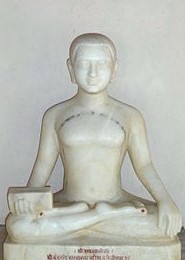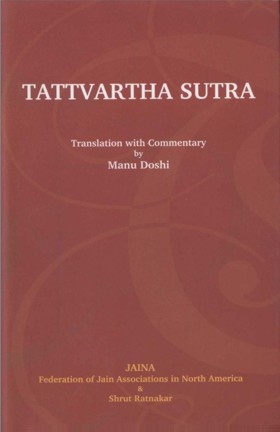01.34 Naigamsangrahvyavahārrjusutrashabdā Nayā
Audio: Sanskrit: केनैगमसङ्ग्रहव्यवहारर्जूसूत्रशब्दा नया: ।
Hindi: नैगम, संग्रह, व्यवहार, ऋजुसूत्र और शब्द ये पांच नय है।
01.35 Adyashabdou Dwitribhedau
Audio: Sanskrit: आद्यशब्दौ द्वित्रिभेदौ । 1/35
Hindi: आद्य अर्थात प्रथम नैगम नय के दो और शब्द नय के तीन भेद है।
01.34-35
English:
The mention was made of Naya as a point of view in sutra 6. These sutras deal with various points of view. There are many perspectives from which an object or a situation can be viewed. As such, there could be as many Nayas as the number of perspectives. All of them can be broadly classified in two main categories of Nishchay Naya meaning the absolute point of view and Vyavahār Naya meaning the practical point of view. When an object is described in its true intrinsic form, it is called Nishchay Naya. From that point of view, for instance, the soul can be described as spotlessly pure and as imbibed with infinite capabilities. From the worldly viewpoint, however, it can be described as smeared with Karma. That is called Vyavahār Naya.
Nayas can also be divided in two categories of Dravyārthik Naya and Paryāyārthik Naya. When one takes into consideration the substantia! aspects and ignores the differences, it is called Dravyārthik Naya. Dravya denotes a substance. As such, to call the soul as pure consciousness is Dravyārthik or the substantial point of view. When, however, one emphasizes the differences and ignores the substantial part, it is Paryāyārthik Naya. Paryāy denotes the changing states. To describe a soul as a human being is Paryāyārthik, because it indicates the state of soul, which is different from a heavenly or other state of existence. If such differing states can be translated as modes, this viewpoint can also be called the modal point of view.
There are various traditions about classifying Nayas. Sutra 34 classifies them in five categories of common view, generic view, practical view, linear (applicable at present) view and verbal view. Sutra 35 states that there are two sub-categories of common view and three of verbal view. Sub-categories of common view are, however, not seen in popular usage. Those of verbal view are specified as linear, derivative and literal. As such, there are following seven sub-categories of Nayas.
These three categories can be termed as belonging to Dravyārthik viewpoint. Now let us consider those of Paryāyārthik viewpoint
 Acharya Umaswati
Acharya Umaswati
